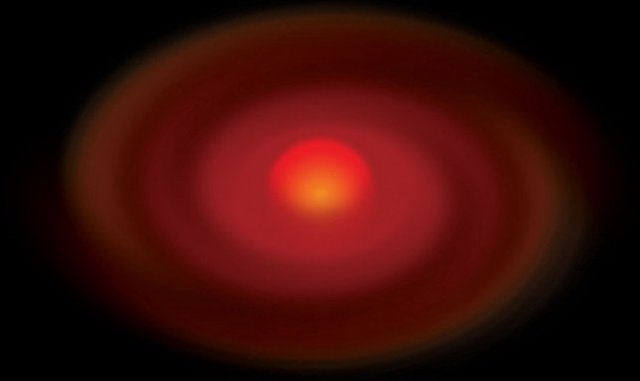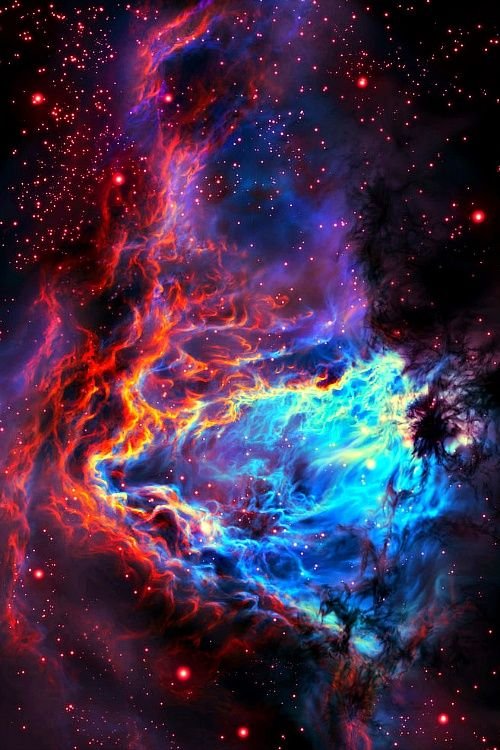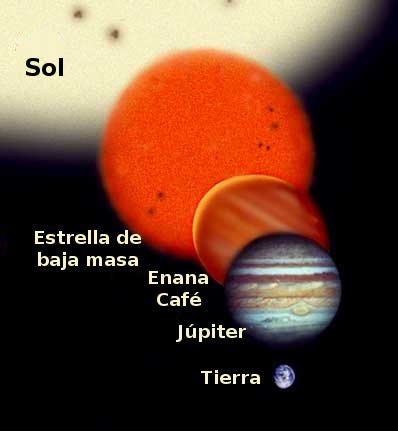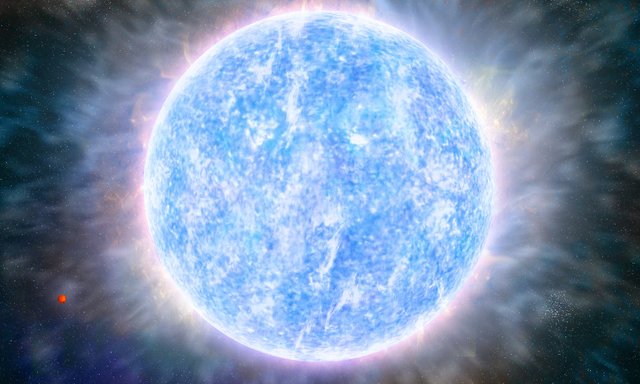Protostar and star formation:
Veeeeeeeeeeery good to all friends, followers and readers, I hope you are having a great day today because I bring something that will amaze you, something that you will love, of course if you are an amateur astronomer like me hehehe. Even so, I hope you enjoy it and it is to your liking.
¿Protostar, what's that?
A star always goes through a period of evolution, from its birth to the day of its death, a process that lasts millions of years to complete. In its birth and initial formation can be found elements such as helium, hydrogen and star dust all compressed because of the force of gravity, this process of initial evolution is when the star is called protostars.
The protostars radiate the half that contributes the gravitational collapse, the other half is invested in heating the nucleus. The heat is transported to the surface entirely by a convection process due to the highly ionized material slowing down photons, preventing a good efficiency of radioactive transport.
Process:
In this process is where they begin to initiate thermonuclear processes inside, the center begins to warm up and then release large amounts of energy burning the fuel it has. In the proto-stars it is said among scientists that Bok globules with a density of about 1,000 times higher than common nebulae can be found and that they also have a diameter of between 0.05 and 0.5 parsec.
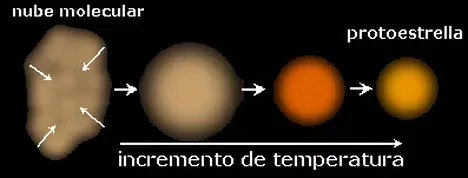 A star that has a mass similar to ours (the sun) takes to complete this process in about 100 million years but a star with a larger mass, we talk about 15 times the mass of our star, it would take about 100 thousand years in this process, less time as a result of having greater gravitational field which accelerates the process and also, the life time of the star itself.
This process is completed when the star reaches the main sequence in the diagram of Hertzsprung-Russell, during all this time you can only see the star in the form of a molecular cloud in which several stellar points are formed, the elements contract not in a uniform way forming several stars together that are still contracted between together and fragmenting and forming several protostars within what is known as a cluster.
A star that has a mass similar to ours (the sun) takes to complete this process in about 100 million years but a star with a larger mass, we talk about 15 times the mass of our star, it would take about 100 thousand years in this process, less time as a result of having greater gravitational field which accelerates the process and also, the life time of the star itself.
This process is completed when the star reaches the main sequence in the diagram of Hertzsprung-Russell, during all this time you can only see the star in the form of a molecular cloud in which several stellar points are formed, the elements contract not in a uniform way forming several stars together that are still contracted between together and fragmenting and forming several protostars within what is known as a cluster.
Star Cluster:
The star clusters are large stellar formations that contract not uniformly but in fractions, which fragments them creating different protostars.
You can see many cumulus clouds and different superclusters in the vacuum of the universe, one of them is the supercluster of virgo, which instead of stars is composed of more than a thousand galaxies inside, this is the closest cluster to ours and it is difficult to appreciate because of its size so extensive.
Above left we can see a large star farm full of protostars in formation.
Stage of a star:
The stage of a star is only one of the several phases of life through which a star passes from the day of its birth until the day of its death, this is a process called stellar evolution and that is where it is located protostar.
Main sequence:
This is the first stage of a star, as well as being the longest where the star is responsible only for burning hydrogen and helium in its core while on the outside a bright layer is observed caused by the energy produced directly from the nucleus. Some stars can spend up to 90% of their life in this phase.
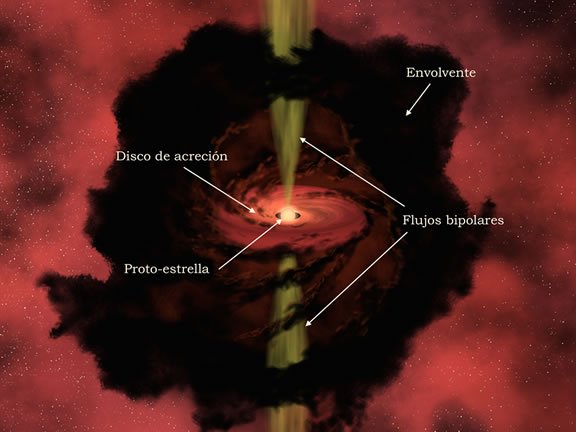 Bipolar flow: A phenomenon that occurs in the early stages of formation of a small star, that is, with very low mass. Associated with the accretion of matter by the protostar, we can also observe the expulsion of this matter in the form of protostellar jets or jets.
Bipolar flow: A phenomenon that occurs in the early stages of formation of a small star, that is, with very low mass. Associated with the accretion of matter by the protostar, we can also observe the expulsion of this matter in the form of protostellar jets or jets.
The phase of old age:
This is the phase after the main sequence and is where the star begins to age little by little as it goes through several changes over time, changes that depend to a large extent on the size of the star. In this phase of aging we can observe the different stages of a star.
Low mass stars:
Subgiant phase: In this phase the star increases its size and cools more on its surface, this happens when it finishes its hydrogen in the nucleus.
Red giant phase: As a subgiant evolves (lower temperatures) at some point the atmosphere of this reaches a critical temperature which causes much more luminosity, as well as size and temperature in the star in addition to a radio close to 100 million kilometers, becoming a red giant.
Red piling phase: The star decreases in size without changing its surface temperature much when it begins to light up in helium, it only happens in stars with more than 0.5 solar masses of initial mass.
Phase of the asymptotic branch of the giants: In this phase the star returns to take the same characteristics observed in its red giant phase, except that this time its mass is double.
High mass stars:
Supergiant blue: When burning the fuel in the initial phase, the star quickly begins to lower its temperature but maintains its luminosity, then goes through the yellow supergiant phase in which the temperature exceeds 6,000 K.
Red Supergiant: These are the stars with the largest colossal sizes in the universe, they have radios with astronomical measurements and it is where stars with masses between 9 and 30 solar masses die.
A date:
This process can be called in a few words as the attempt of a nebula to maintain balance between internal forces and gravity.
Sources:
Source 1
Source 2
Source 3
Image sources:
Image source 1
Image source 2
Image source 3
Image source 4
Image source 5
Image source 6
That was all for today, thanks for reading and if you like give me your vote and follow me in @rcrdoo for this and more types of content, I hope you liked it, greetings and I wish you a successful life...

